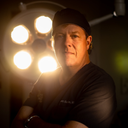Posted underBreast Augmentation q&a
Is a capsulectomy only performed on the side with capsular contracture or is it standard to do both? (photos)
If I do not wish to get new implants, is it best to remove the capsule on both or just the CC side? Or does it matter? One side is very hard like a baseball, the other side feels rather squishy and may have a rupture. I think I want to have the explantation, then wait to see if I will need a lift. My implants are McGhan, textured, round silicone from 1991.
Answers (24)
From board-certified doctors and trusted medical professionals
More Breast Augmentation Questions
See all Breast Augmentation Q&AWE SEND PRETTY
EMAILS
What’s trending? Who’s turning heads? Which TikTok myths need busting? We’ve got you. No fluff, no gatekeeping—just real talk. Get our free, unfiltered newsletter.









